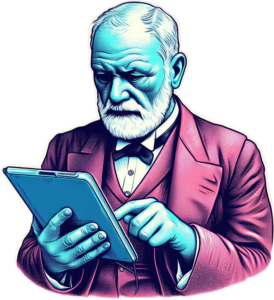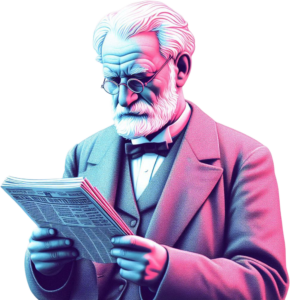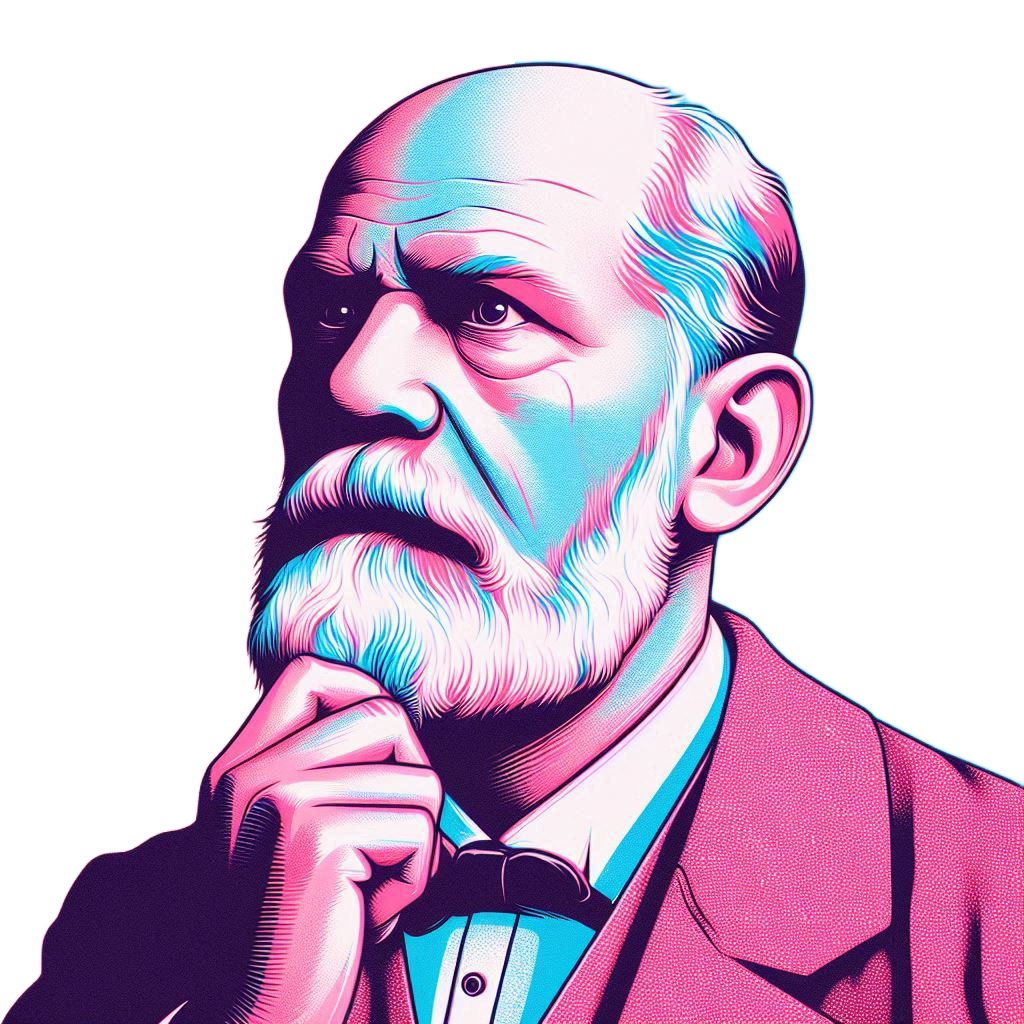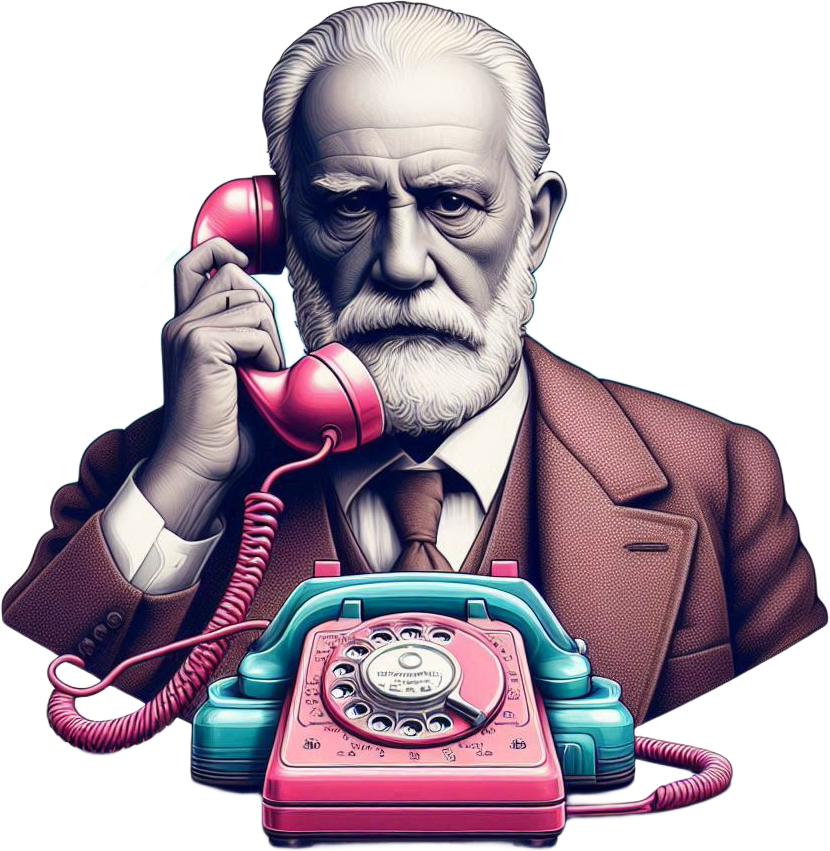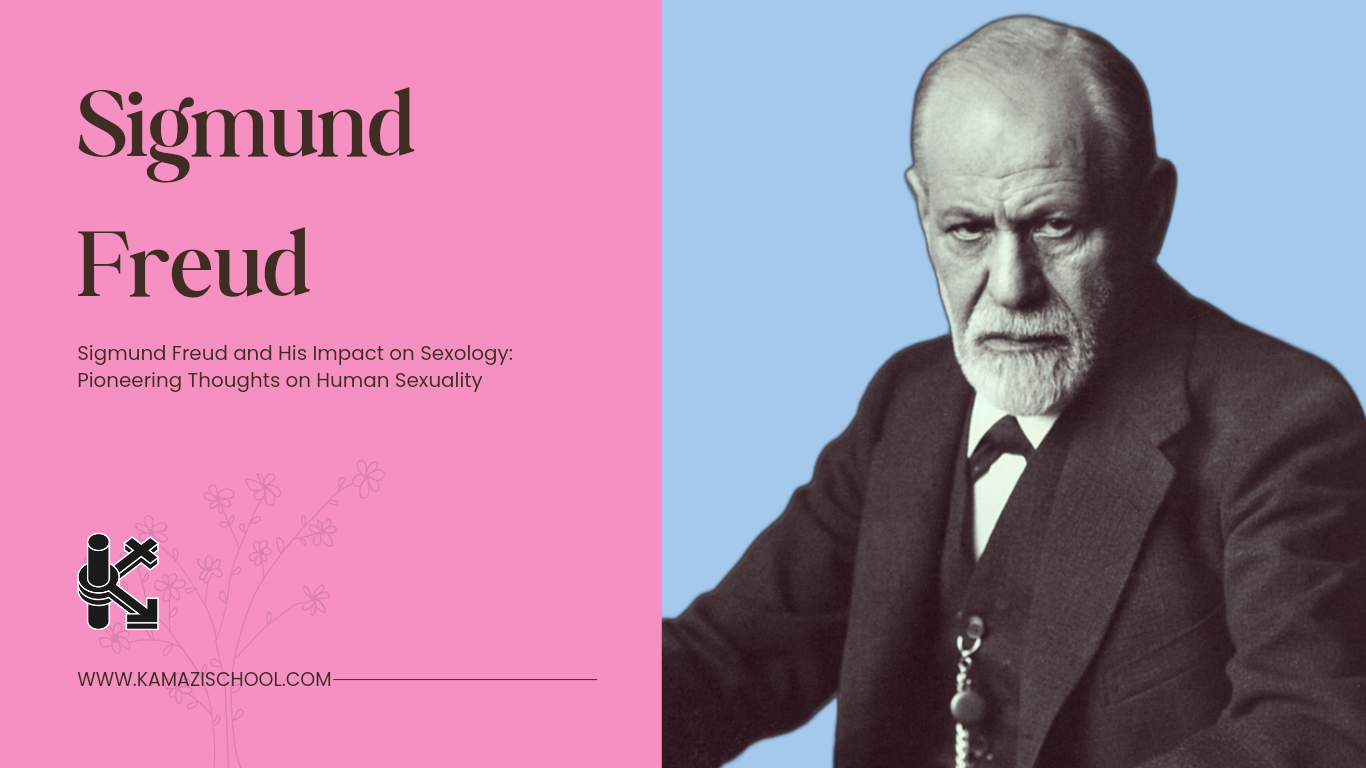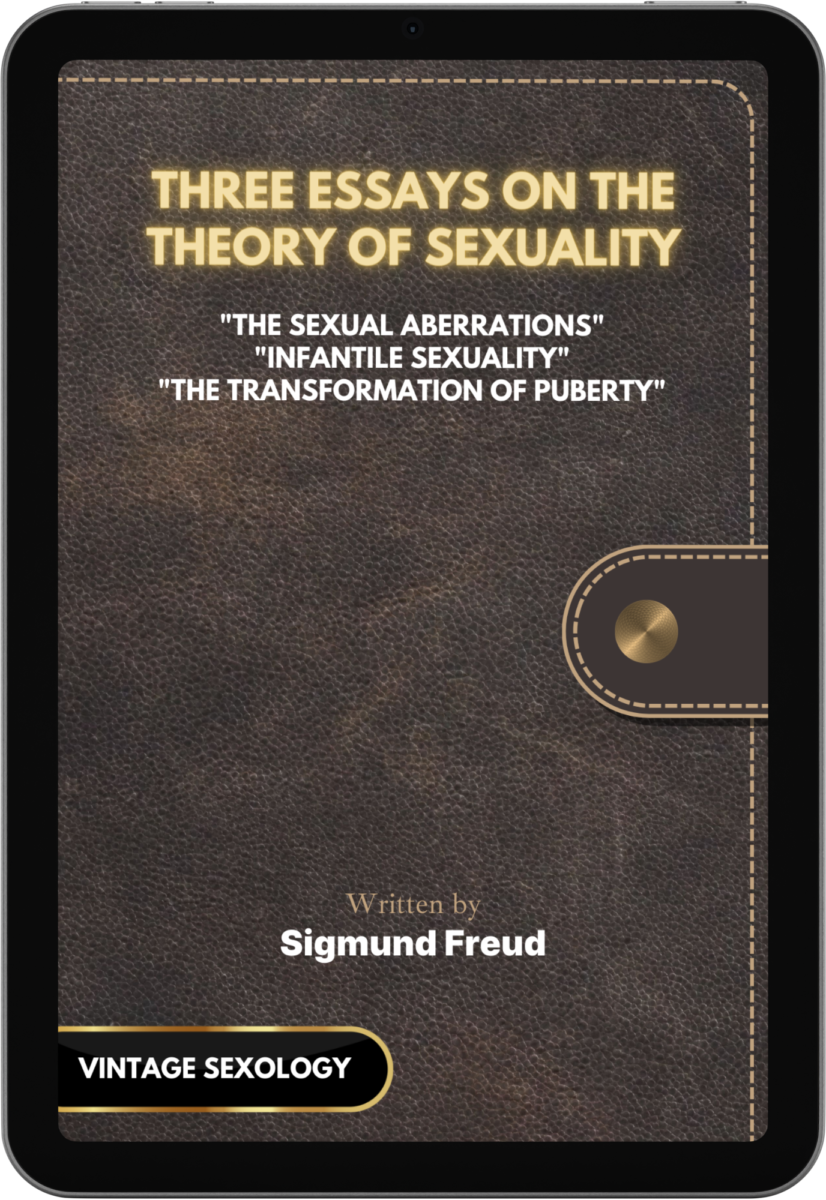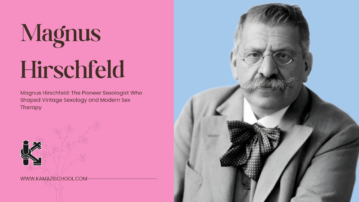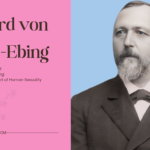
Richard von Krafft-Ebing: Unveiling the Legacy
May 23, 2024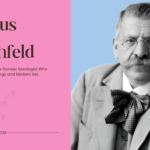
Magnus Hirschfeld: The Pioneer Who Shaped Vintage Sexology
September 22, 2024Table of Contents
Introduction
Sigmund Freud and His Impact on Sexology
Before his groundbreaking theories transformed psychology and sexology, Sigmund Freud was a man with a fascinating personal life and a relentless drive to understand the human mind. In fact, his personal experiences and early life had a significant influence on the development of his theory. By exploring the lesser-known details of Freud’s journey, we gain insight into the personality and experiences that shaped his revolutionary ideas.
Early Life and Family Background
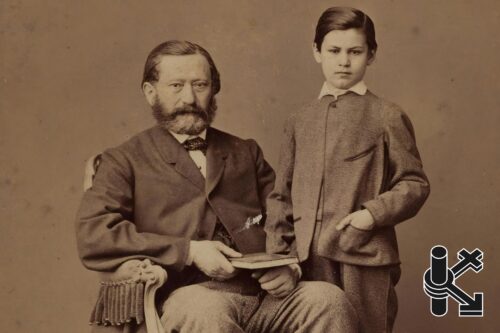
Jakob Freud (l) with his son Sigmund
Sigmund Freud was born on May 6, 1856, in Freiberg, Moravia (now Příbor, Czech Republic), into a middle-class Jewish family. His father, Jakob, was a wool merchant, and his mother, Amalia, was Jakob’s second wife. Freud shared a close bond with his mother, who called him her “golden child.” This affection notably influenced his theories on familial relationships, including the Oedipus complex.
When Freud was four, the family moved to Vienna, where he spent most of his life. Despite financial hardships, his parents prioritized his education, recognizing his intellectual abilities early. Consequently, Freud went on to become one of the most influential thinkers of his era. Thus, his early years and family dynamics were pivotal in shaping his groundbreaking ideas.
![The Jacob Freud family, Vienna, ca. 1878. Copyprint. Freud Museum, London (7)
(left to right standing) Pauline, Anna, unidentified girl, Sigmund, possibly Rosa's fiancé, Rosa, Marie, and Simon Nathanson [Amalia's cousin]; (sitting) Adolfine, Amalia, unidentified boy, Alexander, and Jacob-vintage sexology- -sex therapy-sexology](https://kamazischool.com/wp-content/uploads/2024/12/Picsart_24-12-17_08-39-15-679-500x371.jpg)
The Jacob Freud family, Vienna, ca. 1878. Copyprint. Freud Museum, London (7) (left to right standing) Pauline, Anna, unidentified girl, Sigmund, possibly Rosa’s fiancé, Rosa, Marie, and Simon Nathanson [Amalia’s cousin]; (sitting) Adolfine, Amalia, unidentified boy, Alexander, and Jacob
A Scholar with Diverse Interests
Freud’s academic journey was marked by a deep curiosity that extended beyond medicine. Initially, he had aspirations of studying law or philosophy, but he ultimately pursued a degree in medicine at the University of Vienna, graduating in 1881.

Freud at work in his study.
Freud was also multilingual, fluent in German, French, English, Italian, and Latin. This linguistic skill allowed him to engage with a wide array of scholarly works, including literature, which heavily influenced his theories. Shakespeare, for example, was a source of inspiration for Freud’s exploration of human behavior and motivations.
Impact of sigmund freud on Vintage Sexology and Modern Sex Therapy
Freud’s insights laid the foundation for vintage sexology, transforming it into a scientific field. His work not only sparked interest in human sexuality but also challenged Victorian-era taboos, thereby encouraging open discussions about sexual behavior. Moreover, Freud emphasized the role of early childhood experiences in shaping adult sexuality, offering a fresh perspective on sexual development.
Furthermore, modern sex therapy has been profoundly influenced by Freudian concepts. Therapists now explore unconscious motivations, childhood experiences, and repressed desires to treat sexual dysfunctions. As a result, Freud’s theories continue to shape both sexology and therapy today.
Additionally, Freud was influenced by figures like Richard von Krafft-Ebing, whose studies on sexual deviance contributed to understanding sexual complexities, and Magnus Hirschfeld, whose work on sexual minorities shaped Freud’s ideas on sexual variation. Freud’s theories also impacted later figures like Alfred Kinsey, William Masters, and Virginia Johnson in their work on human sexual behavior.
REDISCOVERING THE ARCHITECTS OF SEXOLOGY
Commemorating The Visionaries Who Molded Our Perception Of Human Desire
Sigmund Freud’s Key Works on Sexuality
Freud’s exploration of human sexuality is most prominently featured in several of his groundbreaking works. Here are some of the key texts and articles that have left an indelible mark on the study of sex:
1. “Three Essays on the Theory of Sexuality” (1905)
In this seminal work, Freud discusses the development of sexual instincts and the role of sexuality in human behavior. He introduces the concepts of libido, psychosexual development, and the idea that childhood experiences significantly influence adult sexual behavior. The essays cover topics such as infantile sexuality, deviations from normal sexual behavior, and the transformation of puberty.
2. “totem and taboo” (1913)
Sigmund Freud examines the origins of societal norms regarding sexuality, delving into the incest taboo and its implications for culture and civilization. This book offers a psychoanalytic perspective on the intersection of sexuality and societal structures. Freud links the development of religion and cultural practices to repressed sexual desires and the sublimation of those desires.
“Civilization and Its Discontents” (1930)
In this essay, Freud explores the tension between individual desires and societal expectations. He argues that civilization imposes restrictions on sexual expression, leading to widespread feelings of discontent and repression. Freud discusses how the suppression of sexual instincts can lead to neuroses and psychological distress.
“On the Sexual Theories of Children” (1908)
This article delves into the early sexual theories that children form to understand the differences between the sexes, birth, and the origins of babies. Freud discusses how these naive theories influence their psychosexual development and contribute to later psychological issues.
“The Sexual Enlightenment of Children” (1907)
Freud argues for the importance of sexual education for children, emphasizing that misconceptions and ignorance about sex can lead to anxiety and neuroses. He highlights the need for honest and age-appropriate communication about sexual matters to promote healthy development.
“The Ego and the Id” (1923)
Although not exclusively focused on sexuality, this work is crucial for understanding Freud’s broader theories about the mind. Here, he outlines how the ego mediates between the id’s primal desires (including sexual urges) and the moralistic demands of the superego.
10 Groundbreaking Theories by Sigmund Freud That Revolutionized Sexuality
Freud’s theories on sexuality were revolutionary for his time and continue to influence the field of sexology. Here are three key theories that have had a significant impact:
1. Psychosexual Development
Freud proposed that human development occurs in stages, each associated with a particular erogenous zone. These stages—oral, anal, phallic, latency, and genital—shape an individual’s personality and sexual behavior. Fixations or conflicts at any stage can lead to specific adult behaviors and neuroses.
Significance: This theory remains a cornerstone in understanding how early childhood experiences shape adult sexuality and personality traits.
2. Oedipus Complex
Central to Freud’s theory of psychosexual development is the Oedipus complex. During the phallic stage, children experience unconscious sexual desires for the opposite-sex parent and hostility toward the same-sex parent. Resolving this complex is crucial for healthy psychosexual development.

Oedipus and Jocasta (The mother and beloved) crying while separating
Significance: The Oedipus complex is still a pivotal concept in psychoanalysis, influencing our understanding of family dynamics and emotional development.
3. Libido Theory
Freud introduced the concept of libido, or sexual energy, which he believed was the driving force behind much of human behavior. Libido evolves through various stages of psychosexual development, and repressed libido can lead to psychological issues.
Significance: Freud’s libido theory highlights the profound role sexual energy plays in shaping human motivations and actions.
4. Polymorphous Perversity
Freud suggested that infants are born with a capacity for polymorphous perversity, meaning they can derive pleasure from various parts of the body without restrictions or societal norms. This raw sexual energy becomes organized as the individual matures and conforms to social expectations.
Significance: This theory underscores the importance of societal influences in shaping acceptable sexual behaviors.
5. Sublimation
Freud believed that sublimation redirects sexual energy into socially acceptable outlets, such as art, intellectual pursuits, or creative endeavors. This process helps individuals channel their desires in productive ways.
Significance: Sublimation demonstrates how sexual energy can transcend its biological purpose to fuel cultural and personal achievements.
6. Erogenous Zones
Freud identified specific erogenous zones—areas of the body that are particularly sensitive to stimulation and capable of producing pleasure. These zones evolve as a person progresses through the psychosexual stages of development.
Significance: The focus on physical sensation provided a basis for understanding the biological and psychological aspects of human sexual behavior.
7. Seduction Theory
In Freud’s early work, he proposed that adult neuroses often stemmed from childhood sexual trauma, referred to as the seduction theory. Although Freud later revised this idea, suggesting these memories were often repressed fantasies rather than actual events, it remains an important part of his exploration of sexuality.
Significance: This theory emphasized the influence of early experiences on adult mental health and sexuality.
8. Repression
Freud argued that repression plays a key role in human sexuality. Sexual desires that conflict with societal norms or moral values are often pushed into the unconscious. However, these repressed desires can manifest as psychological symptoms or dreams.
Significance: Repression is central to psychoanalysis and remains a critical concept in sex therapy, helping patients uncover and address hidden conflicts.
9. Thanatos and Eros: The Death and Life Drives
Freud introduced the dual instincts of Thanatos (death drive) and Eros (life drive) to explain the interplay between destructive and creative forces in human behavior. Eros encompasses love, creativity, and sexual energy, while Thanatos represents aggression, self-destruction, and a desire for cessation.

Eros and Thanatos hugging each other
Significance: These drives highlight the complexity of human motivation, emphasizing how sexuality is intertwined with broader existential forces.
10. Transference and Countertransference
Freud observed that patients often transfer feelings of love, desire, or hostility onto their therapist (transference), while therapists may experience emotional reactions toward their patients (countertransference).
Significance: Understanding transference is crucial in sex therapy, allowing clinicians to navigate the dynamics of emotional projection in therapeutic settings.
Personal Habits and Traits
Freud’s personal habits and quirks offer a glimpse into his character:
- Passion for Smoking
Freud was devoted to cigars, viewing them as a source of pleasure and intellectual stimulation. Even after developing oral cancer, he continued to smoke, considering it one of the few joys he couldn’t give up. - Meticulous Work Ethic
Known for his disciplined routine, Freud rose early, worked long hours, and kept detailed notes of his observations and ideas. This dedication was key to developing his theories. - Fondness for Art and Antiquities
Freud had a deep appreciation for art and collected ancient artifacts that adorned his office in Vienna. These objects symbolized his fascination with the unconscious mind and the connection between past and present.
Family Life
Freud married Martha Bernays, the granddaughter of a prominent Jewish scholar, in 1886. The couple had six children, and Freud’s relationship with his youngest daughter, Anna Freud, was particularly close. Anna followed in her father’s footsteps, becoming a prominent psychoanalyst and extending his work into the realm of child psychology.
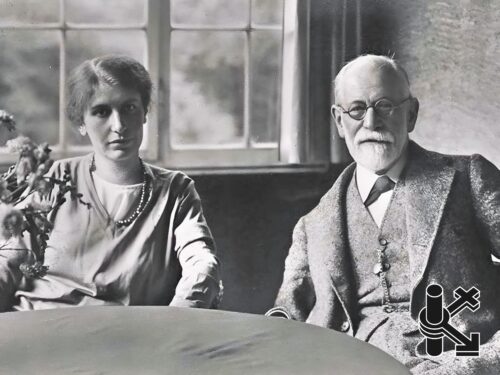
Sigmund and Anna Freud (daughter) 1929.
Overcoming Challenges
Freud’s career was not without obstacles. As a Jew living in Vienna during the rise of anti-Semitism, Freud faced significant prejudice. Despite these challenges, he maintained a strong network of colleagues and collaborators who supported his work.
In 1938, with the annexation of Austria by Nazi Germany, Freud and his family fled to London, where he spent the final year of his life. The trauma of displacement and the ongoing health struggles from his cancer marked his later years, but Freud continued to work until his death in 1939.
Fun Facts and Lesser-Known Details About Sgimund Freud
- First Patient: Himself
Freud often analyzed his own dreams and thoughts, pioneering the practice of self-reflection, which became a cornerstone of psychoanalysis. - Coining of “Freudian Slip”
While Freud never used the term, the concept of unconscious slips of the tongue—mistakes revealing hidden desires—became popularly associated with him. - Animal Lover
Freud had a deep fondness for dogs, particularly his chow chow, Jofi, who often accompanied him during therapy sessions. He believed Jofi’s presence had a calming effect on his patients. - Interest in Hypnosis
Early in his career, Freud experimented with hypnosis. However, he abandoned it in favor of free association, a technique he developed to explore the unconscious mind. - Fear of Trains
Freud suffered from a significant train phobia, limiting his ability to travel long distances. This fear likely stemmed from personal anxiety and a sense of losing control. Despite this, he continued his research and maintained global influence.
Conclusion
Sigmund Freud’s pioneering work in sexology has had a lasting impact. His theories on psychosexual development, the Oedipus complex, and libido continue to shape our understanding of human sexuality. By advocating for the scientific study of sex, Freud not only influenced vintage sexology but also laid the groundwork for modern sex therapy.
As we explore human sexuality further, Freud’s contributions remain fundamental to both research and practice. For those seeking deeper insights, key works such as “Three Essays on the Theory of Sexuality,” “Totem and Taboo,” and “Civilization and Its Discontents” provide essential perspectives on the complexities of sexuality.






